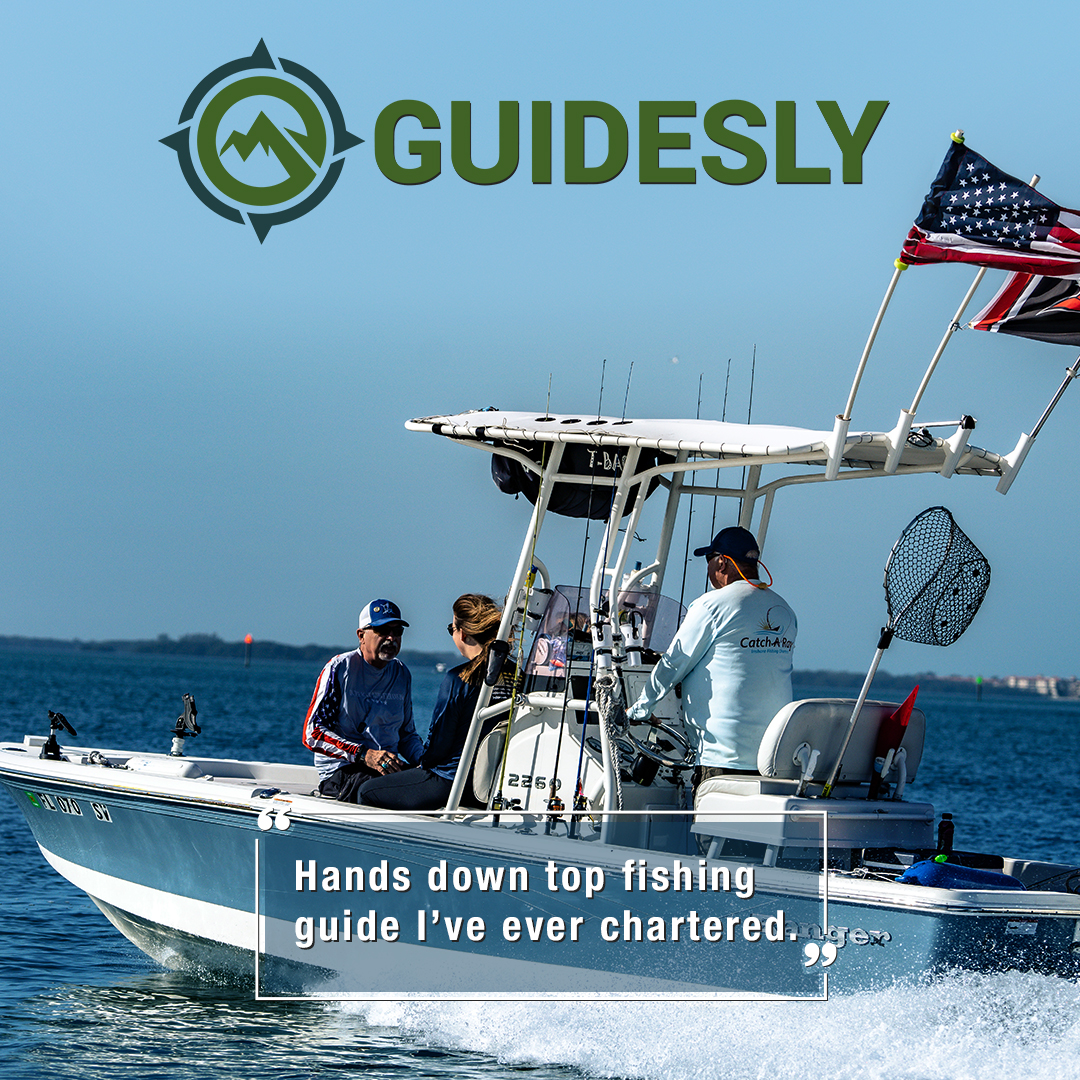Euro-Nymphing In the US - Latest Trend in Fly-Fishing
Learn about Euro-nymphing, the trendy new fly fishing technique that catches more fish. Find info about the all-important what, where, and how.
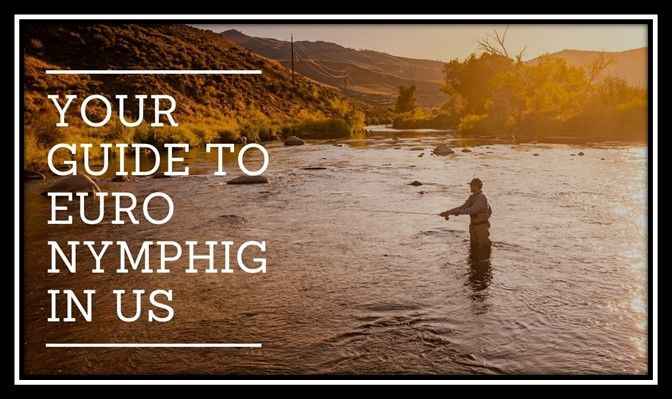
Euro-Nymphing In the US - Latest Trend in Fly-Fishing
I'm pretty sure the gossip you've heard on European nymphing has you curious about what it is and why exactly it is gaining so much popularity. That is why I'm here today - to help you understand more about this newly invented yet beneficial fly fishing concept.
Most experts estimate 80% to 90% of trout eat subsurface. Nymph fishing is a great way to find those fish and euro nymphing is the latest trend, specifically from France, Czechoslovakia, and Poland. The primary driver was the usual suspects, how to catch big trout that are easily spooked.
Let's start by addressing the simple question: What exactly is European nymphing or as most US anglers call it, euro nymphing?

Euro nymphing is a new technique used to catch trout using heavy flies and a light tippet. The process's rapid speed is owed to the heavyweight of the nymphs used, which helps them sink quickly. A sighter (updated substitute for a strike indicator) made of monofilament is used, and the use of a sighter helps the angler understand precisely where the fly is.
Euro-nymphing, also called Czech nymphing and modern nymphing is becoming increasingly famous in the fly fishing industry. Its rapidly increasing popularity owes primarily to its versatility and effectiveness. More and more anglers in the US adopt this method, with many claiming that its usage has helped double (sometimes even triple) the fish's volume.
Now, Why is euro nymphing in the US so competitive?
The answer can be deduced from its origins - fly anglers from the US participated in international fly fishing competitions, and they brought back and merged the best techniques used into one, highly effective technique called euro nymphing. This method is bound to be worth a shot, evident from the fact that it helped win many competitions.
Which Nymphs are Used in Euro-Nymphing?
Nymphs are tiny insects living underwater, and it would be safe to say they are the trout's favorite meal - This is why they are extensively used.
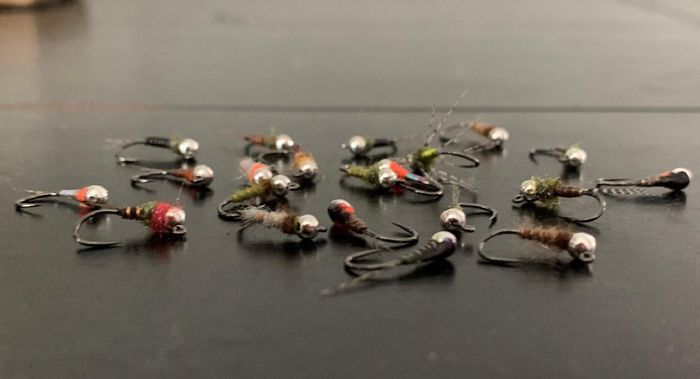
The nymphs used in euro-nymphing are of a specific type, initially referred to as "Bobesh." Over the years, this name has been referred to more simply as the Czech nymph. These are heavily weighted flies that imitate larvae and are tied against a hook. These nymphs are designed to be very thin and densely weighted to quickly go as deep as possible into the water increasing the time and distance that the fly is in the feeding zone.

Euro nymphs have bright, beautiful colors, giving them a bold and catchy appearance. The sizes of flies used vary according to the depth of the water. In the waters of Europe, the most frequently used measures are number 10 and 12.
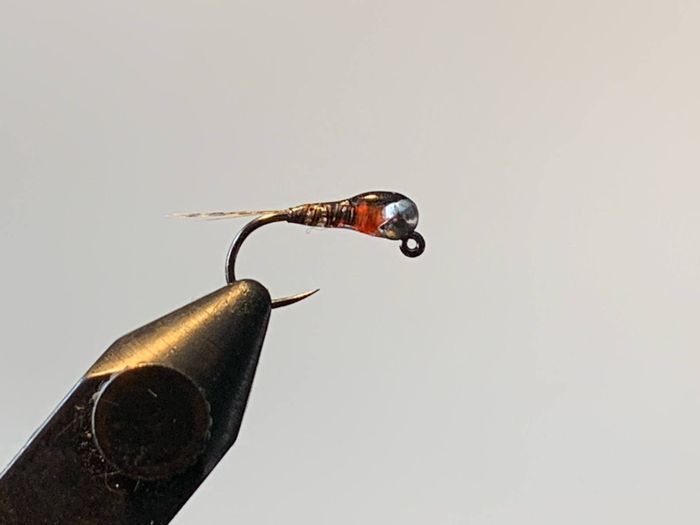
Here are some examples of a "euro nymph" used in Euro Nymphing:
1. Perdigon
It has a thin body, a straight tail, and a vast bead. It sinks very fast and stays underwater for more extended periods. Its small size means that it is more likely to trick a trout into its consumption, which will, in turn, enhance the volume of fish caught by the angler.
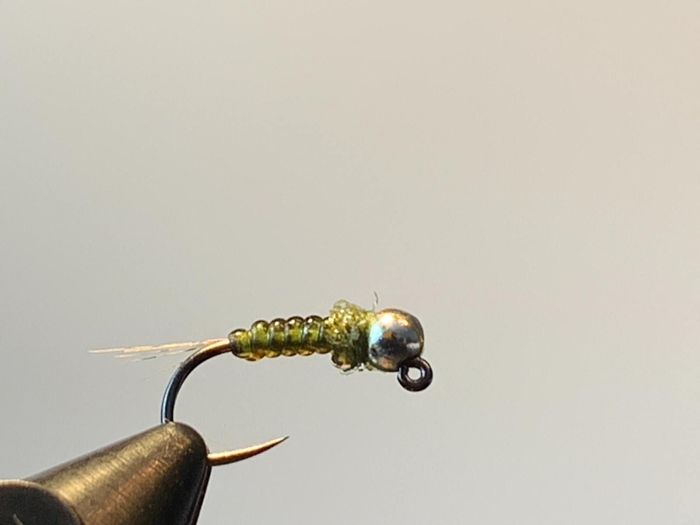
2. Wilds
These are nymphs without legs that also have unique colors. For this type of nymph, the color in particular is the most significant driver of its success and of its high catch rate.
3. Sedges
These imitate the larvae of Sedges, an alternative name for caddisflies. Their colors range between green, yellow and black, and have been tried and tested to increase bites when fly fishing.
What Makes Euro Nymphing Fun - Top for a Reason!
Euro nymphing in the US is gaining popularity for a reason, which can primarily be associated with its results.
You may be wondering, why go out of the way and invest when I'm catching quite a fair amount already?
If you are, then you REALLY need to hear this: euro-nymphing is a game-changer, and you can only understand its usefulness when you use it.
Besides, even if you ARE catching enough fish a day ... a few extra dozen wouldn't hurt, would they? I'm sure you'd love it!
Now, why exactly does it bring about such fascinating results?
Euro nymphing involves keeping a sharp eye on the fly line so even the slightest attack by a fish can be detected - we are catching each one of those fellows! This strict check is kept by keeping a little slack in the line, so whenever a fish (or a rock) touches it, the line tightens up and can be detected by the angler. This method ensures that no activity with the fly goes unnoticed and can be acted upon as soon as possible.
The method above also relates to why euro nymphing is such a fun process. The angler will continuously be "interacting" with the flies, in the sense that the flies' activity can be overlooked. The constant interaction with flies and the short distances means there will be increased hook up rates - the angler can sense even a simple "sniff" from space by the trout! This technique enhances fishing skills and the art of angling in addition to the increased catch.
Additionally, the use of a sighter in place of an indicator makes sure that the angler can see exactly where the fly is and what progress it is making. Unlike with an indicator the sighter will travel at the same rate as the fly at the bottom of the water column. An indicator travels at the rate of the surface current often creating drag or lifting the fly off the bottom (slower current) and out of the feeding zone. When eliminating this drag with an indicator the angler will often add slack to the line which in turn eliminates direct "feel" or connection to the fly. You're having no dull moments just sitting there; there will be some pretty exciting activity going on. Instead, the angler remains connected and occupied with the nymphs, making the process more fun.
When and Where to Fish Nymphs - Getting it all Sorted
It may be hard to learn and master the tactics associated with euro nymphing for someone new to it, so that is what I'll be talking about next.
When will you be fly fishing the euro-style using nymphs?
Euro nymphing is effective in water depths between 18" and 6'. This means you can start euro nymphing from a center of 18". When the depth exceeds 6', it gets challenging to monitor fish strikes, hence reducing the water's effectiveness. It also means that the speed of the water will be slower than that required for euro nymphing.
Furthermore, where can you fly fish using the European style nymphing?
Euro nymphing can be used in both large and small bodies of water in the US. Although sometimes misunderstood by anglers, it is beneficial for both types of waters, with the only factor needing monitoring being depth, as mentioned above.
All in all, the following points demonstrate when and where to fish nymphs:
- You are inclined towards weighted flies.
- The waters you are fishing have considerable speed.
- The depth of the waters is in the acceptable range of 18" to 6'.
The Art of Euro-Nymphing - The Skills Involved
It would be safe to say that euro-nymphing is an art of its own; it involves skills and tactics to bring about the desired results.
The fascinating aspect of it involves catching heaps and heaps of fish without using a split shot and indicator - something you'd assume is required at all costs.
The skills of the fly fishers who invented this technique overcame the need for these two essentials. Not attaching weights to the leader meant it would be hard to sink the nymph deep enough, but the following way solved this problem: they used heavily weighted nymphs (by incorporating heavier beads on the larva). These weights ensured the nymph reached the depths where trout roamed.
Secondly, not having an indicator meant it would be impossible to detect strikes. In solution, the skilled fly fishers introduced the sighter. A sighter is a piece of monofilament attached to the middle of the leader. Its usage helped detect strikes and allowed the anglers to keep a look on their flies.
These two iconic solutions proposed and implemented by highly skilled fly fishers opened a new phase in fly fishing; anglers now found a new way to adapt their nymphs and leaders, which let them interact with their flies and increased hook-up rates an appreciable amount.
The Fly-Fishing Gear for Beginners - A Guide
Now that you are familiar with euro nymphing and how it works, I will proceed by clearing out your next query: What fly fishing gear do I need to get started?
Let me list the gear required as a beginner, so you can try it out while working around a budget and see if you like it enough to invest in some more (though I'm sure you'll love it and the results it brings!).
- The euro nymphing rod is long, light, and typically has a soft-action rod tip. While a standard 9' fly rod will work, a typical euro rod is 10' or 11' and 2-5 weight. Beginners can start out with a standard fly rod with more focus on the euro nymphing setup which is the more important component. Your rod will bring in convincing results, but remember, this is just for a trial - a longer rod in the future will take you a long way!
- You can build your own or purchase a euro nymphing leader. This new one will be longer than the conventional leader you've been using. Euro leaders typically have around 2 feet of a sighter (a colored piece of monofilament that will help you track your flies' activity and interact with them).

- Note: You can always buy a leader and sighter separately and attach them, but as a beginner, I'd recommend you buy a two-in-one leader that already has the sighter attached - this will save you time and some extra effort!
- A tippet ring will be attached to the end of your new leader. The flies will, in turn, be linked to this additional tippet. By running a tippet that varies in length depending on river depth and how far across the river you are casting, allows the fly or flies to sink at the same and rapid rate.
- Purchase new nymphs containing tungsten beads. These beads add weight to your nymph, and make sure it goes deep enough to enter the trout zone.
- Finally, you have to purchase a level line. Euro Nymphing Fly Line is very light with an extremely thin diameter and low stretch to sense the slightest of takes.
Advanced Skills in Euro-Nymphing
If you've already mastered the basic skills and have the necessary equipment, this portion is for you. I will now discuss the advanced skills required as a professional angler using the euro nymphing technique.
One of the advanced techniques involved in euro nymphing is maintaining efficient contact with the flies. This connection can be supported by keeping a smooth fly line and leader, making sure to clear out any loops. An efficient way to do this is by lifting and sinking the nymphs continuously.
Give enough time for the flies to sink - you do not want to be lifting the flies in the attempt of clearing out the loops before they have reached their maximum depth. This tip is useful as trout are mostly found more profound deep in the waters. The current at the bottom of the water column moves at a slower rate making it an efficient level for the trout to reside and eat while expending very little energy. Not letting them delve deep into the water may put your investments and efforts in vain!
Additionally, stretch your hand throughout the process. Doing so increases productivity by a whole lot! It increases concentration and response rate to strikes, enhances hook-up rates and fish volume.
Another advanced skill is the usage of a double tapered line in place of a level line. Doing so allows for a two-in-one function, allowing you to quickly and easily shift between the dry fly rig and the regular rod. It also decreases the number of rods you have to carry from two to one.
Enough on the Information - Time to Go and Check It Out!
Now that you have all the information, you'll need to start euro nymphing, a fly-fishing technique introduced by competitive anglers in the '80s, it is time for you to start with the practical work.
But wait. Is the initial investment making you slightly hesitant? No time for second thoughts, mate. The results will leave you astonished and willing to invest even more into the advanced equipment - you have my word.
Buy that euro leader and tungsten, heavily-weighted nymphs (and any other equipment you may be lacking) and head off to the waters! The mere first few attempts will help you understand why your fishing partners (and I) have been raving about euro nymphing - I mean, who wouldn't love an extra few dozen trout?

